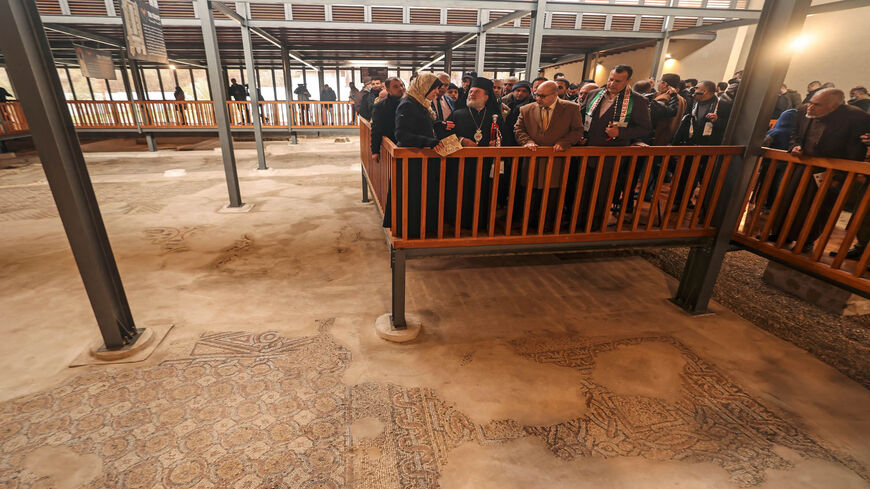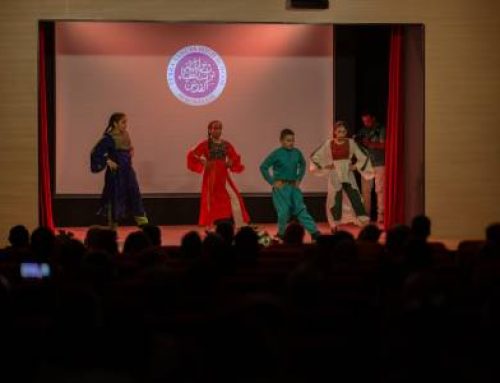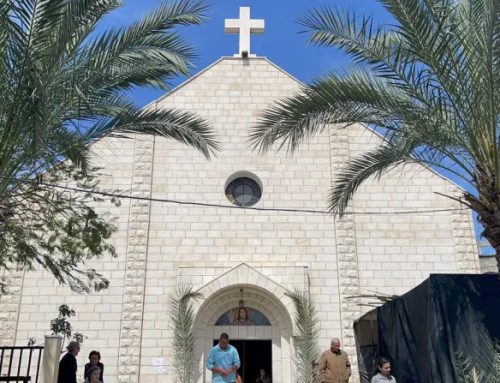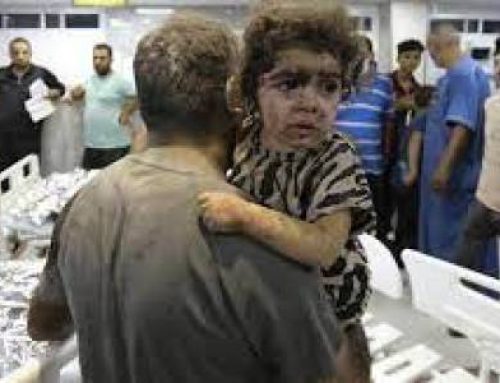GAZA CITY, Gaza Strip — The Palestinian Ministry of Tourism and Antiquities in the Gaza Strip inaugurated Jan. 24 the Byzantine Church as a public museum. The ancient church, which is located in the Jabaliya refugee camp in the north of the enclave, dates back to the fifth century.
The ministry worked with several international partners on reconstructing and renovating the church established about 1,700 years ago, in an attempt to revitalize domestic tourism.
Jamal Abu Rida, director general of antiquities at the Ministry of Tourism and Antiquities in the Gaza Strip, told Al-Monitor that the church ruins were discovered in 1988 by chance when local workers were paving the Salah al-Din highway linking the northern and southern Gaza Strip. The site was buried in sand due to time and climate factors.
Abu Rida explained that the ministry also unearthed the graves of emperors and churchgoers at the site. “They were identified after their bones were examined. We also found coins and pottery pieces,” he said.
He noted, “This church is one of the most important churches in the Levant, as it was established in the era of Byzantine Emperor Anastasius I in 497. It was located on the ancient trade land route linking Gaza with the Levant and was a rest stop for Christian pilgrims heading to the Holy Land.”
Abu Rida said that the site consists of three buildings, namely the church, the chapel and the baptistery, spanning over an area of 800 square meters (8,600 square feet). “This church is the only one in the Middle East with 17 scripts in Old Greek inscribed on mosaic pavements, which prove that it was expanded and renovated several times over several eras. The church’s floors are adorned with mosaics depicting scenes from the natural world, including fruits, birds and animals inspired by Greek and Roman myths.”
He explained that many icons were destroyed during the Byzantine Iconoclasm (726-876) and it was difficult to restore them. He said, “This church has witnessed the rule of 24 Byzantine emperors, starting with Emperor Anastasius I and ending with Emperor Heraclius. It also survived in the Islamic era, which was ruled by 14 Islamic caliphs, starting from Omar Ibn al-Khattab in 636 to Abbasid Caliph Abu Ja’far al-Mansur in 775.”
He added, “The church was damaged during the successive Israeli offensives on the Gaza Strip, which led to the destruction of parts of its mosaic floors. As part of emergency conservation efforts in 2012, the ministry installed temporary protection canopies for mosaic floors, built a protection fence and restored damaged parts of the mosaic floors.”
The restoration project was supervised by the Ministry of Tourism and Antiquities, and carried out by the French organization Premiere Urgence Internationale and the British Council, in partnership with the French School of Biblical and Archaeological Research, between 2017 and 2021.
The project included excavation, restoration and maintenance works, unearthing graves and the monks’ living quarters, and permanent covering and protection works of the mosaic floors. An exhibition hall, a meeting hall and entrances to the church were also equipped.
Abu Rida said the church has now become a tourist site fully equipped to receive local and foreign visitors. “Restoration of Christian and Islamic archaeological sites encourages local and foreign visitors alike to visit the Gaza Strip,” he noted.
He pointed out that the Byzantine Church is only open for visitors as a museum, and not as a place of worship, stressing that guards affiliated with the ministry are deployed at the site to ensure protection.
“All the uncovered artifacts are displayed for the public at the site. Wooden walkways were installed to allow visitors to safely admire the mosaic floor,” he added.
The coordinator of Premiere Urgence in Gaza, Jihad Abu Hassan, told Al-Monitor that the restoration of the church was part of the Intiqal 2030 program that was launched by the organization in 2017. The program aims to rehabilitate heritage sites in the Gaza Strip, most notably the Saint Hilarion Monastery (Tell Um Amer) and the Byzantine Church in Jabaliya.
He said the Saint Hilarion Monastery in Tell Umm Amer area, in the village of Tabatha, is one of the largest monasteries in the Levant and is now on UNESCO’s World Heritage tentative list. “This site needs huge restoration and preservation efforts,” he noted.
“The Byzantine Church is home to numerous biblical texts and mosaic paintings that have been buried in sand since the government in Gaza was unable to explore and restore them due to the poor financial situation. Restoration works lasted for three years,” Abu Hassan continued.
Intiqal 2030 is a youth-led initiative aimed to support young people by providing training opportunities for graduates of architecture, history and archaeology from Palestinian universities in Gaza, in the fields of heritage protection and restoration of antiquities.
Abu Hassan said, “Many university graduates in these fields do not have job opportunities due to a lack of workshops and training programs aimed to develop their capabilities. The program seeks to engage the Palestinian community and raise awareness of the importance of heritage, urging it to interact with its heritage and archaeological sites to develop its resilience and safeguard its identity and basic rights.”
He added, “In addition to the restoration works of the antiquities, the project offers training by experts for six to 12 months to graduates in this field. Around 84 graduates have been trained so far on how to manage and follow up on restoration works and reconstruction protection.”
Abu Hassan explained that the project was supervised by six international experts from the French School of Biblical and Archaeological Research in several fields, including mosaics, excavations, pottery restoration, animal remains science and 3D imaging.
He also talked about the difficulties encountered during the restoration works. “We faced a shortage and delayed delivery of some materials needed for the repair and maintenance works amid the Israeli blockade. It was also difficult to bring in foreign experts to the Gaza Strip. Moreover, the closures imposed to curb the coronavirus outbreak in 2020 affected the progress of the restoration work,” he concluded.
www.al-monitor.com






